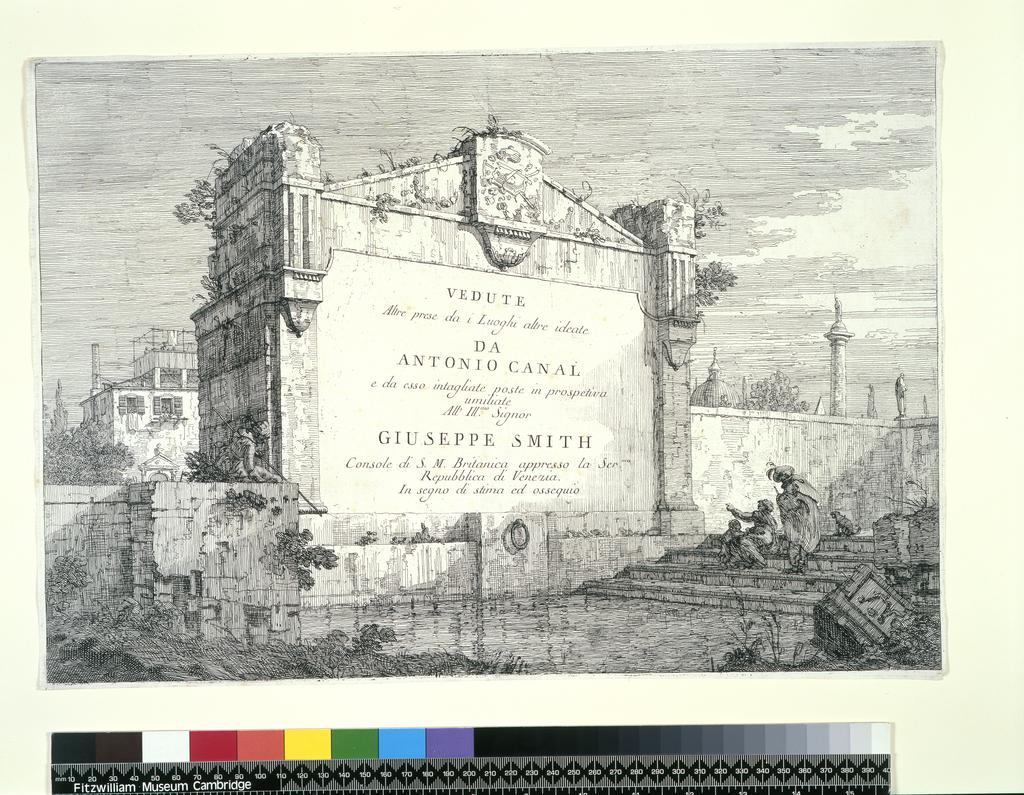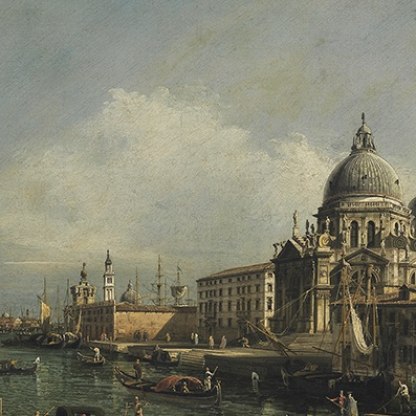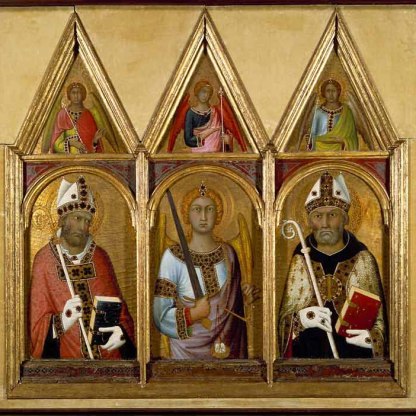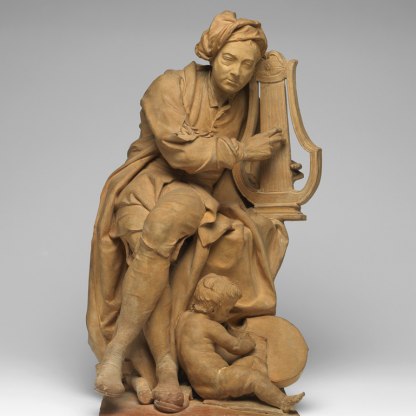View of the Grand Canal, Venice

In 1725, when Stefano Conti, a wealthy merchant from Lucca, wished to expand his collection of Venetian paintings, he contacted his agent in the city, Alessandro Marchesini. Conti requested two views by the local painter, Luca Carlevarijs, but Marchesini recommended instead a younger artist, Antonio Canal. 'His work', he reported, 'is like that of Carlevaris, but you can see the sun shining in it.'
Venice, the once great Republic, the city of canals, palaces and churches, has often been depicted in art but rarely more brilliantly than by Canaletto. The sunlight that had caught the eye of Marchesini illuminates this view, as we look from the Campo Zobenigo towards the entrance of the city's Grand Canal.
It is a beautiful day. The sky, with a few wisps of white cloud, is a clear blue. The greener surface of the water is scarcely ruffled. The sun shines upon those parts of the buildings that face us, while much of the right side of the canvas is in shadow.
In the foreground at the left of the picture is the side of the sixteenth-century Palazzo Pisani-Gritti, its arched windows overlooking landing jetties for the gondolas used to ferry passengers from one bank of the Canal to the other.
Across the water we see the Gothic brick façade of the church of San Gregorio, behind which looms the magnificent edifice of Santa Maria della Salute, with its two domes and bell tower. Covered in statues and carved marble, this great church was erected between 1631 and 1680, a thank-offering to the Virgin Mary from the people of Venice for delivering them from a plague that had wiped out a third of the city's population.
Visible in the distance are the tower and colonnades of the Dogana da Mar, the Customs House built in the late seventeenth century. Further off still, we see the dome and bell tower of San Giorgio Maggiore, erected on its own small island.
But, although they are often dwarfed by the architectural surroundings, it would be wrong to overlook the people in Canaletto's paintings.
Venice itself – a thriving commercial centre built upon dozens of tiny islands in a lagoon – is a testament to human skill and resourcefulness, and in Canaletto's Venetian work, man is always shown to be in control of his liquid environment. Here people travel and work upon the water, while the Customs House in the background reminds us of their ability to trade upon it. Every November a pontoon bridge is still made across the point in the Canal that we see in Canaletto's painting to the church of Santa Maria della Salute – a powerful symbol of man's mastery of water.
The Fitzwilliam is lucky to own a view of the very same stretch of the Canal by Canaletto's nephew Bernardo Bellotto [186]. Though strikingly similar, there are subtle differences between the two paintings. For instance, Canaletto's Santa Maria della Salute seems taller and bulkier than his nephew's, while, in the Bellotto, the distant tower of San Giorgio is given more prominence. And while Canaletto shows an interest in architecture and the effects of light, his nephew is more concerned with atmosphere.
Although Canaletto's work is remarkable for its apparent naturalism – its linear perspective, the brilliant rendition of brickwork and marble, stucco and wood – he rarely reproduces a topographically exact view. For him the pictorial effect is more important than documentary accuracy, and he might alter the scale of a building or detail, or even ignore it altogether. He is a supreme example of the artist as illusionist – making us believe that we know the real Venice from his paintings, when in fact he is offering his own, rarefied vision of it.
It was a vision that proved very popular with English travellers to the city. When Canaletto painted this view of the Grand Canal he was working chiefly under the agency of Joseph Smith, an English merchant who introduced the artist to many of his fellow countrymen. In 1742, Smith published a series of engravings after paintings by the artist, a set of which the Fitzwilliam owns.

Canaletto's popularity in England prompted him to live there between 1746 and 1755, during which time he portrayed London and the Thames in the same idealised and fascinating light as he had Venice and her canals. Left is a painting made during this period, Westminster Bridge, with the Lord Mayor's Procession on the Thames. It is now in the Paul Mellon Collection, Yale Centre for British Art, USA.
Themes and periods
Data from our collections database
Commander David Heber-Percy; his sale, London, Christie's, 25 June 1971, lot 24; with Leggatt Brothers, London; Dr McDonald
Legal notes
Bequeathed 1991.
Acquisition and important dates
- Method of acquisition: Bequeathed
- Dates: 1992
Maker(s)
Materials used in production
Read more about this recordStories, Contexts and Themes
Other highlight objects you might like
Suggested Curating Cambridge products
Sign up to our emails
Be the first to hear about our news, exhibitions, events and more…







